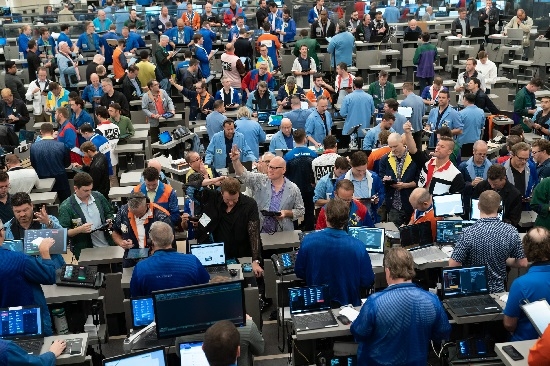Part One: Cboe's blueprint for turbo charging product design
Cboe Global Markets has a long track record of firsts – from index options through volatility trading to listed crypto contracts. At the end of last year, the Chicago-based exchange group took a fresh approach by bringing together a dedicated team in a formal innovation hub.
Global Investor talked to Rob Hocking, global head of product innovation and the person in charge of shepherding development at Cboe Labs. Cboe is in its 50th year and Hocking has been a member and trading permit holder of Cboe options exchange for nearly twenty of them.
Trading behaviour in the options market has changed significantly in that period, and that shift is only accelerating. The exchange’s flagship S&P 500 (SPX) index options product suite has gone from strength to strength and has ridden the wider wave of US equity index options growth, but it is the users and their needs that represent the most dramatic changes.
Back in May, Cboe chairman and chief executive Ed Tilly opened his results call welcoming record performance, driven by a 28% growth in options revenue across its four venues. Nearly 43% of its first quarter SPX volume was made up of zero-day-to-expiry (0DTE) options or single day options, more than double where they were two years ago. The strength and persistence of that flow has caused a lot of debate in the market, but it’s clear from rival exchanges the trend has now accelerated across asset classes. People want to trade with more frequency and flexibility, and that makes sense to Hocking.
“Over the past two decades, there has been continued customer demand for the ability to trade with greater precision around market events,” Hocking said. “What we have seen is the culmination of that process with the growth of daily or 0DTE options, which have been available before, but wasn’t as robust of a product set as we have now.
“With daily-expiring options available today, it is possible for investors to accurately and more cost effectively reduce volatility around macroeconomic events. The utility of these options has led to the explosive growth we’ve seen in volumes. That growth is not only coming from the short-dated or 0DTE options bucket, but across the SPX complex as a whole. Even on record days, we have not seen shifts in the volume ratios between 0DTE and the rest of the SPX flow. For example, on March 10 this year, we saw record volumes in SPX but 0DTE trading only accounted for 41% of all SPX volume that day.”
In March 2020, amid the trading frenzy around the Covid pandemic, there was a boom in equity trading across platforms – driven by retail flow that came to be known as the “memestock” phenomenon. Commentators tended to lump that together with the increase in shorter dated activity in options, particularly in equity markets but Cboe believes the truth is more nuanced.
“An interesting point that bears that out is the very balanced mix of users we have, where customers make up approximately 41% of the volume, firms are 8% and market-makers or liquidity providers comprise the remaining 51%,” Hocking added. “If we focus on the customer capacity, as of July, about 75% of all SPX customer volume originated from retail broker platforms. If we only look at 0DTE, that number jumps to around 90%.
“It’s important to note that order flow is coming from what we’re calling retail broker platforms, which does not necessarily mean retail or an individual investor. As we can’t see where these orders originate, we can only make an educated guess around exactly how that breaks down. What I can say is that the feedback has all been positive, and we continue to hear from a diverse group across institutions, systematic algo traders, registered investment advisors(RIAs), even larger retail investors that are engaging in different 0DTE strategies. It’s this broad and diverse user base that’s creating the robust and liquid market that we have today.”
To be continued on August 9
Found this useful?
Take a complimentary trial of the FOW Marketing Intelligence Platform – the comprehensive source of news and analysis across the buy- and sell- side.
Gain access to:
- A single source of in-depth news, insight and analysis across Asset Management, Securities Finance, Custody, Fund Services and Derivatives
- Our interactive database, optimized to enable you to summarise data and build graphs outlining market activity
- Exclusive whitepapers, supplements and industry analysis curated and published by Futures & Options World
- Breaking news, daily and weekly alerts on the markets most relevant to you



